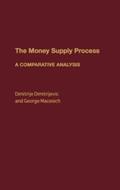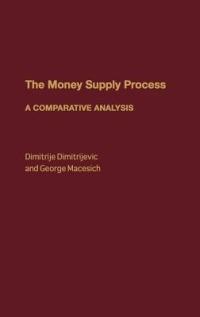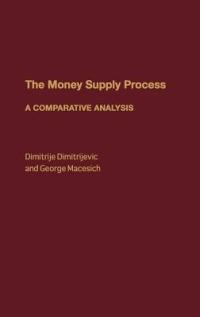L’articolo è stato aggiunto alla lista dei desideri
IBS.it, l'altro eCommerce
The Money Supply Process: A Comparative Analysis
Cliccando su “Conferma” dichiari che il contenuto da te inserito è conforme alle Condizioni Generali d’Uso del Sito ed alle Linee Guida sui Contenuti Vietati. Puoi rileggere e modificare e successivamente confermare il tuo contenuto. Tra poche ore lo troverai online (in caso contrario verifica la conformità del contenuto alle policy del Sito).
Grazie per la tua recensione!
Tra poche ore la vedrai online (in caso contrario verifica la conformità del testo alle nostre linee guida). Dopo la pubblicazione per te +4 punti
Altre offerte vendute e spedite dai nostri venditori



Tutti i formati ed edizioni
Promo attive (1)
A pioneering work in comparative monetary and financial studies, this is the first international comparative, empirical study of the money supply process (MSP) that involves all of the basic types of economies and institutional economic systems at all levels of economic development. As the authors note at the outset, the highly relative nature of the MSP contributes to wide differences in the MSP in different types of economies. Yet the MSP is one of the most important topics of both monetary theory and monetary practice. The comparative approach adopted here enables the authors to explain the differences that do occur in the MSP across economies and what causes them. By properly defining the general theory and overall monetary theory of MSP, the authors offer the reader both a better understanding of the national MSP and a broad framework of possibilities for improving the efficiency of monetary policy. The authors begin by describing their approach to an analysis of the MSP in national economies and the concepts and models used in this analysis. They then explain the classification of economies used in the study and their methodological approach, which is based on a two-dimensional flow of funds accounts matrix. Four chapters present the empirical evidence derived from this approach. Included are both a holistic analysis and a structural comparative analysis of the MSP. A separate chapter presents a comparative analysis involving 100 countries of the MSP during the 1978-83 time period. Finally, the authors look at the influence of the balance-of-payments and of domestic institutional sectors on the MSP. Their concluding chapters summarize their findings and point the way to further research in this area. Scholars and policymakers in economics, macroeconomics, and monetary policy will find this an illuminating addition to the literature of the money supply process.
L'articolo è stato aggiunto al carrello
Le schede prodotto sono aggiornate in conformità al Regolamento UE 988/2023. Laddove ci fossero taluni dati non disponibili per ragioni indipendenti da IBS, vi informiamo che stiamo compiendo ogni ragionevole sforzo per inserirli. Vi invitiamo a controllare periodicamente il sito www.ibs.it per eventuali novità e aggiornamenti.
Per le vendite di prodotti da terze parti, ciascun venditore si assume la piena e diretta responsabilità per la commercializzazione del prodotto e per la sua conformità al Regolamento UE 988/2023, nonché alle normative nazionali ed europee vigenti.
Per informazioni sulla sicurezza dei prodotti, contattare productsafetyibs@feltrinelli.it
L’articolo è stato aggiunto alla lista dei desideri


